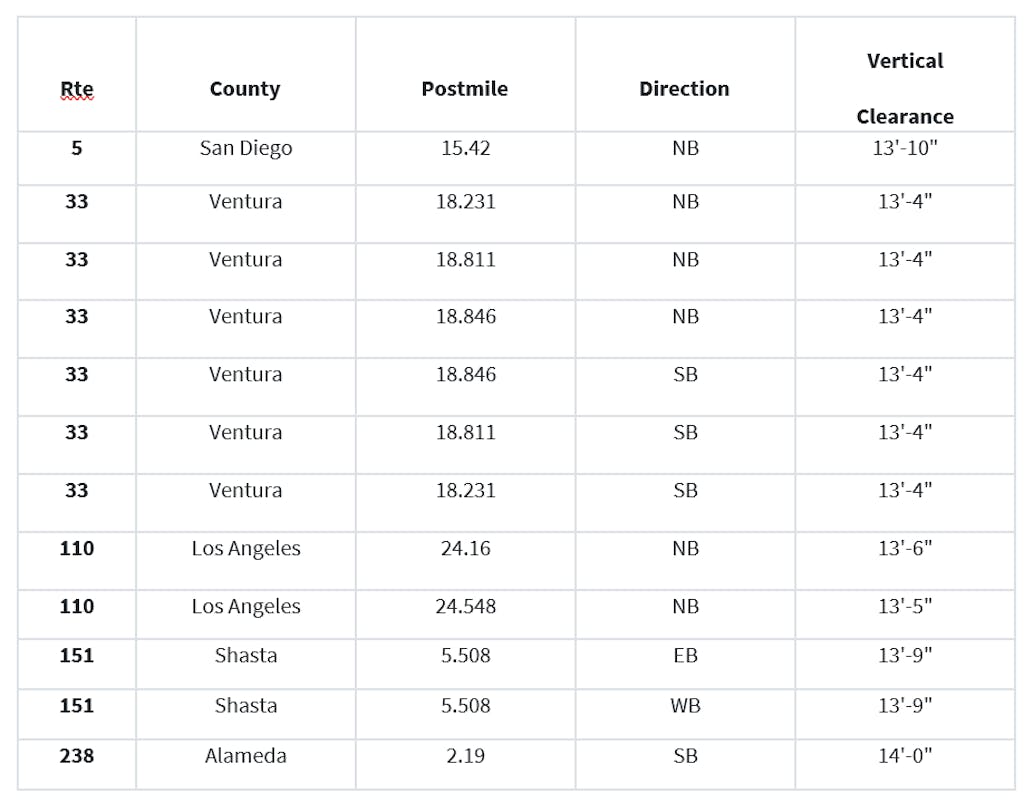What is the Maximum Trailer Height Before Needing a Permit?
November 5th, 2019
Hauling large freight requires several considerations, one of the most important being the maximum trailer height. If you’re looking to purchase or rent a commercial trailer, you’ll want to know all the details of which type of trailer is best suited for your freight to ensure you’re making the right choice.
The U.S. Department of Transportation does not specify a federal height limit, but there are general guidelines based on states’ regulations. The maximum overall height is between 13 feet 6 inches and 14 feet. There are other considerations too, including special exceptions for lower clearance roads and bridges and different types of trailers to help carry freight without permits.
Types of Roads That Affect Maximum Trailer Height
While the general range for trailer height falls between 13 feet 6 inches and 14 feet, many states have exceptions. Some allow for taller freight, some shorter depending on the type of road.
For example, in Louisiana, the legal height is 14 feet on designated highways, but 13 feet 6 inches on all other roads. What are “other roads” and “designated highways,” and what instances do drivers need to be most aware of?

Be Aware of Bridge Clearance
If you’re a driver, always know where to locate the height of your trailer. Trailer heights are clearly indicated on the edge of trailers so that drivers can easily see the height as they approach potentially hazardous bridges.
Most highway bridges have a sign overhead that tells drivers the height, but some bridges may have a unique shape that affects that height at the edges. As seen in the photo above, the bridge’s center clearance provides generous space for most trailers, but the edges are far below the average height of 13 feet 6 inches.
Some bridges may be low clearance across their entire span. State highways indicate the upcoming low clearance on well-marked signs to protect the driver, pedestrians, and overall structure of the bridge and highway.
Before driving, check the overall height of your freight. Flatbed trailer height limits are greater than the limits of a step deck trailer; thus, choosing a step deck trailer may be a good option if you need to accommodate tall freight under bridges.
Clearance Differences on State Routes vs. Other Roads
One of the major differences for road clearance relates to state route regulations by state. Interstates are those roads that cross through different states, while a state route is unique to the state it’s in. You’ll also notice that signage varies depending on the type of highway you’re driving on.
As such, states may have unique clearance regulations on state routes, which can be different depending on the region a state route moves through. For example, look below at California’s state route height clearances for various roads. They go as low as 13 feet 4 inches, and as high as 14 feet.

If you’re following the general guideline of 13 feet 6 inches, you may find your vehicle limited on certain routes. Always check with state and local authorities before traveling to ensure that maximum trailer height falls within legal limits. There are also many tools available for drivers to help with trip planning, such as apps and websites that help you chart a route dependent on your freight height.
When to Obtain a Permit for Trailer Height
Permits can be costly. Operators and drivers may be able to avoid these extra costs with a couple of precautions:
- Check height of freight
- Choose a trailer that accommodates taller freight
- Know the route(s) you plan to take to know exactly where your haul may encounter issues
If your flatbed trailer height and cargo are slightly above legal limits, consider purchasing or renting a drop deck trailer. A drop deck trailer can have a height under 2 feet, whereas a standard flatbed is 5 feet. With that difference, taller freight has ample extra clearance, which may prevent added permitting.
If permits are required regardless of the trailer used, here are some costs to be aware of:
- General permit fee, which varies depending on state and height
- Processing fees
- Route survey to asses road safety for super loads
- Pilot/escort vehicles
- Cost to have signs removed, or trees trimmed to prepare for haul
Loads that are both over the maximum trailer height and width may incur other expenses as well as requiring specialized trailers, like schnables. There are federal regulations related to width and weight, which often apply to tall freight.
Looking for a drop deck trailer for sale? Need service or parts for your trailer? Do you have questions about height restrictions? Hale Trailer has a knowledgeable team of representatives at each of our 12 trailer rental locations to assist in all your trailer needs.
All the information on this website – https://www.haletrailer.com – is published in good faith and for general information purposes only. Hale Trailer Brake and Wheel does not make any warranties about the completeness, reliability and accuracy of this information. Any action you take upon the information you find on this website, is strictly at your own risk. Hale Trailer Brake and Wheel will not be liable for any losses and/or damages in connection with the use of our website.
